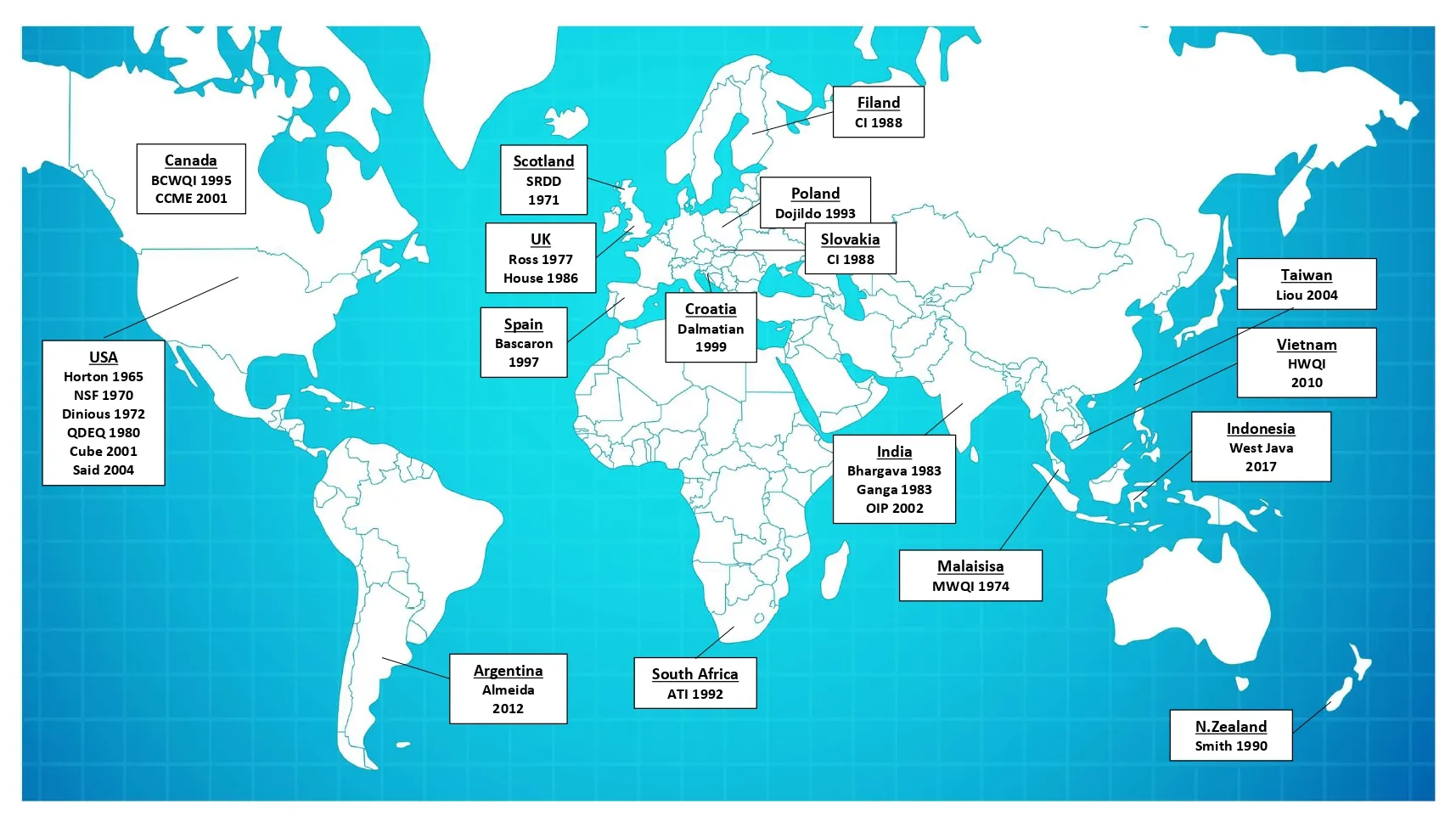Found 37 results
Open Access
Article
30 June 2025Review of Cyprinodontiform Fishes in the Upper Congo Drainage with Descriptions of Four New Species of Seasonal Nothobranchius (Nothobranchiidae) and a New Species of ‘Lacustricola’ Lampeye (Procatopodidae) in South-Eastern DR Congo
The cyprinodontiform fish fauna of the Bangweulu–Mweru and Upper Lualaba freshwater ecoregions, situated in the uppermost Congo River drainage, has been reviewed. This study introduces four newly described species of seasonal Nothobranchius killifish and a novel species of lampeye belonging to the genus ‘Lacustricola’. Nothobranchius iridescens, new species, from the Kafila system in the Lufira drainage, is characterized in male colouration by anal fin with irregular red-brown spots and stripes, creating two irregular submedial and medial bands and with broad yellow subdistal band; and a caudal fin with a slender light blue subdistal band, densely marked with irregular red spots, and narrow dark brown distinct distal margin. Nothobranchius katemomandai, new species, from the Kay system in the upper Lualaba drainage, is characterized in male colouration by an anal fin with narrow brown submedial band, followed by a slender yellow band, a slender red-brown band and a slender dark brown distal band; and a caudal fin with brown spots proximally and medially, and with slender white to light blue subdistal band and a narrow dark grey distal band. Nothobranchius marmoreus, new species, from the Lufukwe system in the Lake Mweru basin, is characterized in male colouration by a body with irregular red-brown patches and stripes, forming a marble-like mottled pattern; and anal and caudal fins with slender yellow to amber subdistal band and broad dark brown distal band. Nothobranchius dubieensis, new species, from the Lubule system in the Luvua drainage, is characterized in male colouration by an anal fin with narrow dark brown submedial band, narrow yellow and orange medial bands, narrow white subdistal band, and slender dark brown distal band; and a caudal fin with irregular red-brown spots and stripes proximally and medially, followed by an irregular narrow red-brown subdistal band and slender white distal band, and with interrupted red-brown fin tips. ‘Lacustricola’ gemma, new species, from the Kay system in the upper Lualaba drainage, is characterized by a pattern of iridescent, diamond-shaped, light blue spots in scale centres below mid-longitudinal series on posteroventral portion of flank; median fins yellow to hyaline, with dark grey stripes perpendicular to fin rays; dorsal fin with light blue distinct margin; anal fin with dark grey margin. Analysis of mitochondrial COI gene sequences revealed that the five new species represent phylogenetically distinct lineages. These findings not only underscore their genetic uniqueness but also confirm their placement within the Nothobranchius brieni species group and the genus ‘Lacustricola’. Species of the genus Nothobranchius complete their seasonal life cycle in ephemeral natural habitats within freshwater wetlands, while ‘Lacustricola’ species migrate to breed in flooded areas of shallow, typically seasonal wetland habitats at the onset of the rainy season. These wetlands are highly vulnerable to a variety of human-induced stressors and threats, including agricultural cultivation, water extraction, urban expansion resulting in land-use pressure, and increased pollution, particularly from industrial activities such as mining. Therefore, it is essential to protect the integrity of these unique aquatic habitats throughout all the seasons of the year to maintain healthy wetland ecosystems and safeguard the distinctive seasonal freshwater biodiversity they support.

Open Access
Opinion
11 June 2025Reflections on Photocatalysis Progress Since the Inspiration of Prof. David Ollis in 1992
Why has photocatalysis not gained the wide-ranging commercial applications in environmental purification of air and water that seemed promising 30+ years ago since the first international conference on TiO2 photocatalytic purification and treatment of water in 1992? The primary reason lies in its low intrinsic efficiency. The progress of R&D to enhance this efficiency has been slow, possibly due to an incomplete understanding of the underlying mechanisms of photocatalysis. There is also the possibility that certain factors, with effects comparable to those of the band gap, significantly influence photocatalytic performance but remain underexplored. Additionally, challenges such as mass transfer limitations and surface contamination hinder the industrial application of photocatalysts. It may be time for scientists to reconsider and address the limitations and practical application scenarios of photocatalysis.

Open Access
Article
10 June 2025Influence of Surface Waves—Von Karman Street Interaction on Bottom Sediments Transport in the Vicinity of a Wind Turbine Mast: Experimental and Theoretical Study
Cylindrical structures used in offshore energy production systems are subjected to various stresses and loads (waves and currents). Understanding the interactions between these cylindrical structures and bedforms is critical, as rapid changes in the bathymetry can expose and damage pile foundations and cables. The impact of a vertical cylinder on a sandy sedimentary bottom subjected to hydrodynamic currents and surface waves is experimentally and theoretically studied. Tests were carried out at the wave flume where patterns are produced. It is observed that patterns emerge due to a subcritical instability at the water-sand interface at the bottom. The characteristics of these patterns can be explained using the Swift-Hohenberg equation. Finally, the experimental results will be applied to the numerical model using the Swift-Hohenberg equation.
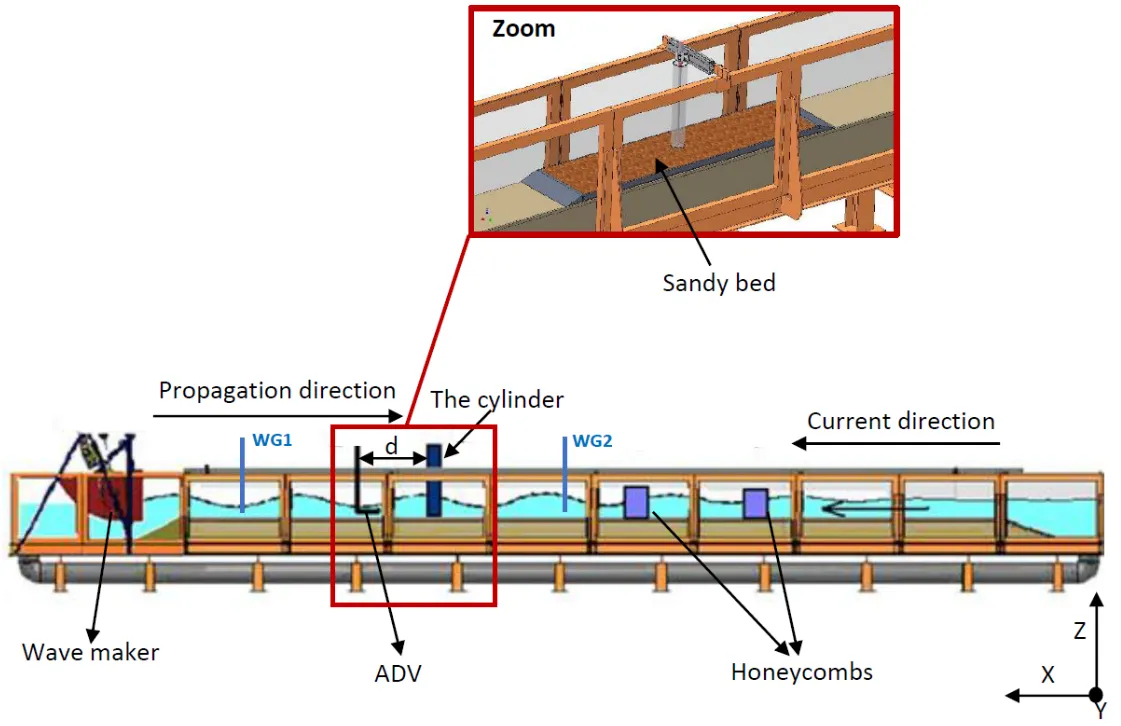
Open Access
Article
28 May 2025A Framework for Watershed Flood Resilience in the Context of Climate Change: Concept, Assessment, and Application
Extreme flooding events are increasing in frequency and severity due to climate change, challenging the effectiveness of traditional, infrastructure-centric flood management strategies. A key gap remains in the lack of spatially explicit and process-based frameworks for assessing and enhancing flood resilience at the watershed scale, which hinders the development of integrated and adaptive management solutions. This study proposes a conceptual framework for evaluating watershed flood resilience (WFR) by integrating resilience theory with the “source-flow-sink” paradigm from landscape ecology. It applies it to the post-disaster reconstruction of the Sishui River Basin following the 2021 Zhengzhou flood in China. The framework quantifies WFR through pre-event resistance capacity and intra-event adaptive capacity using hydrological modeling and loss curves. It systematically analyzes the effects of targeted interventions across source, flow, and sink areas. The results demonstrate that the proposed approach significantly improves WFR in the Sishui River Basin, with source interventions generally outperforming flow and sink interventions in the simulated cases, and compensatory effects observed among different intervention types. The findings confirm the operational feasibility and effectiveness of the proposed framework, including nature-based solutions and spatial planning in watershed management, which could provide support for future holistic and adaptive flood resilience strategies addressing climate change.
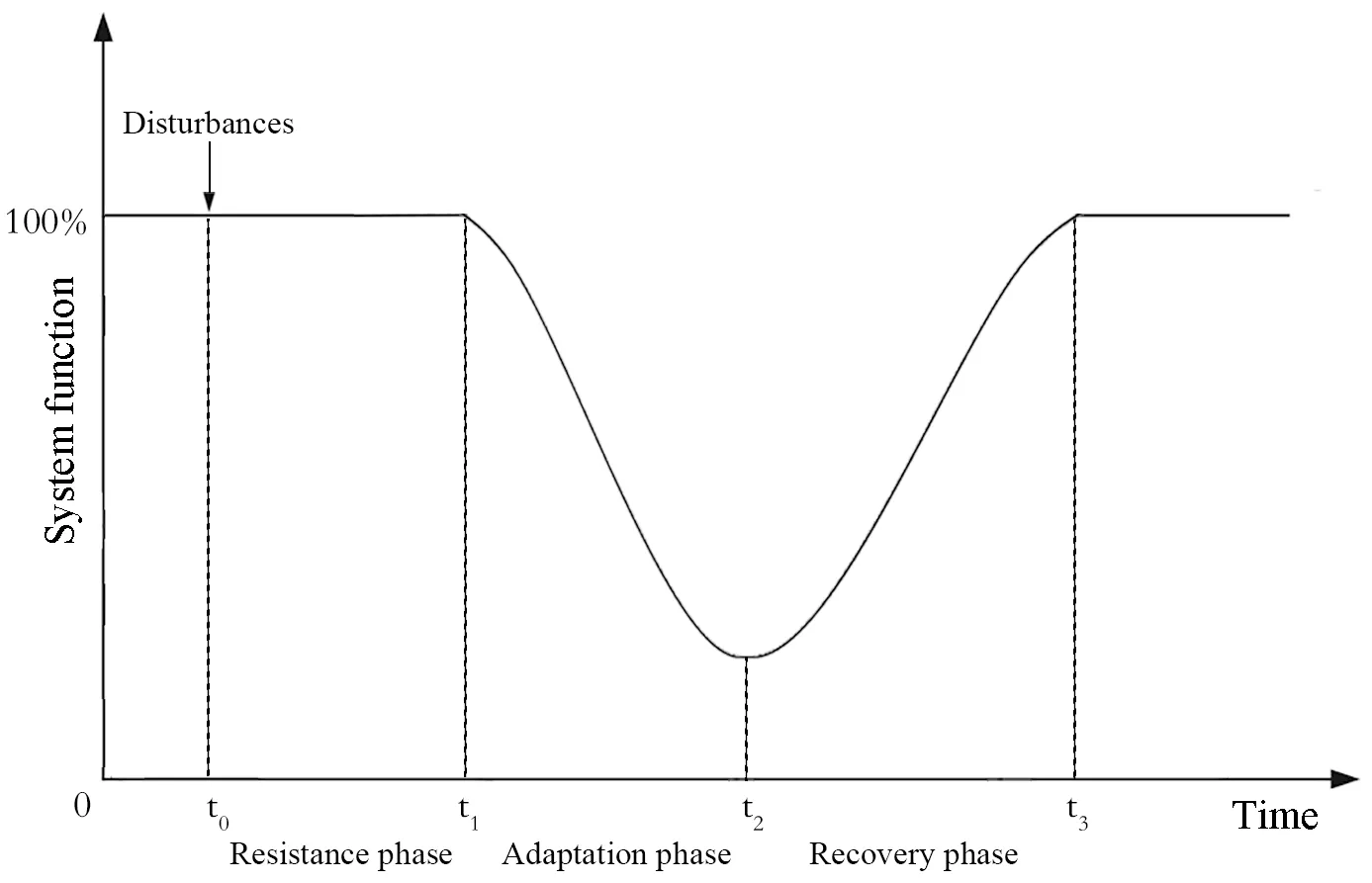
Open Access
Communication
19 May 2025Preparation of High-Temperature Resistant Hydrophilic Membrane for Oil-Water Separation
Through the molecular structure design, first starting from the molecular structure of the monomer, the monomer of the synthetic structure continues to polymerize with propanesulfonolactone, and finally reacts with quaternary ammonium salts to obtain polyimide containing biswitterionic groups. In this study, a hydrophilic polyimide membrane with a quaternary ammonium salt structure was synthesized. Then, the sulfonate hydrophilic structure was introduced into the polyimide film by electrospinning and the stencil method. Hydrophilic groups were introduced by introducing propane sulfonate, and the PI membrane was prepared by electrospinning and the template method. The results show that introduced sulfonic acid groups reduce the contact angle of polyimide membrane from 85° to 30°. The water permeability, porosity and mechanical strength of the membrane were tested and analyzed, and the membrane showed excellent oil-water separation performance.

Open Access
Article
19 May 2025Database of Ecological Indicators of Freshwater Algae and Cyanobacteria
Accumulation of ecological data on species of algae and cyanobacteria represents 9531 taxa-indicators from 18 taxonomic phyla. The most represented among the indicators is the taxonomic group of diatoms. The indicators are grouped into twelve ecological groups, which can be indicators of nine environmental parameters. The environmental characteristics for each of the indicator systems and the relationship between some of them are given. Individual abbreviations of ecological indicator groups that have been established as a result of long-term use are given. References are given to examples of the application of analysis of specific water bodies using bioindication methods, and prospects for use in monitoring and assessing water quality are shown. A specific example of using the database is given. The table of indicator taxa contains cumulative ecological data and is easy to use. This table is a living tool that can be supplemented and transformed when new information about indicator species comes.
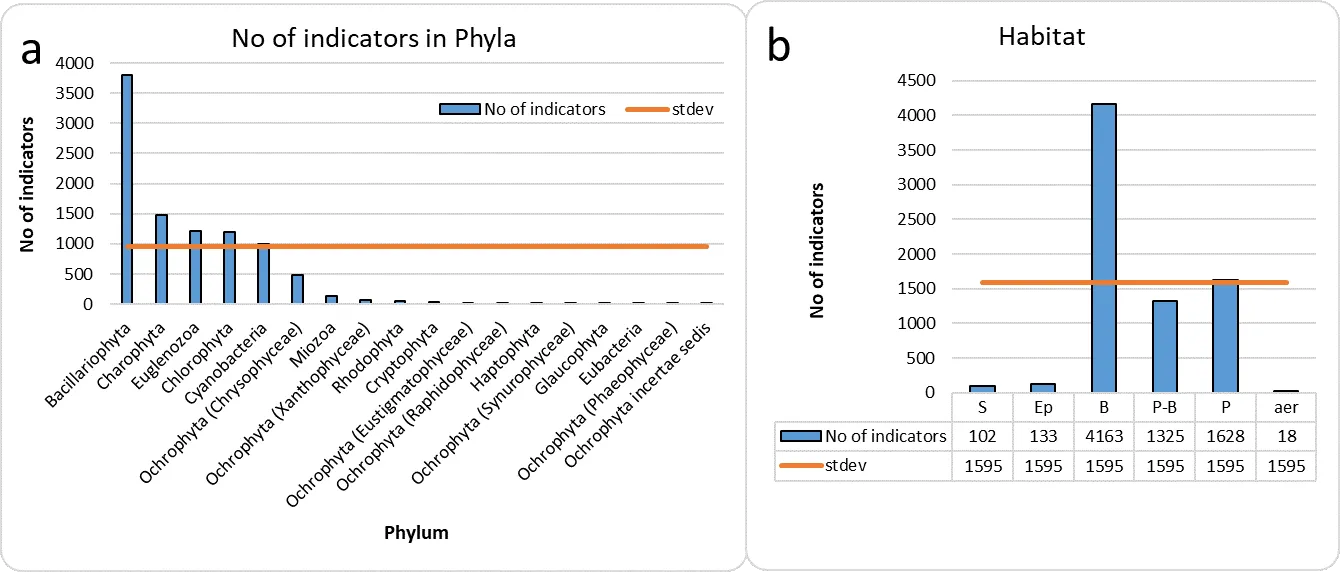
Open Access
Article
23 April 2025Socio-Economic and Environmental Impacts of Jamrani Irrigation Dam Project, Kumaon Himalaya, India
This paper examines the economic and environmental impacts of the proposed Jamrani Irrigation Dam Project on the upstream and downstream areas. This study is primarily empirical, and a case study of six villages was conducted. A total of 415 households are being affected—fully and partially, due to the construction of the dam, out of which 122 heads of households were interviewed. A structured questionnaire was constructed, and the heads of households were asked about the socio-economic and environmental impacts of the proposed dam project. Furthermore, a detailed perception study of these households was conducted. Secondary data related to the size of the dam project, various land uses being affected by the dam, its socio-economic and environmental impact, and the most beneficial sectors were collected from the irrigation department, Government of Uttarakhand’s report 2020. In addition, socio-economic data from 415 households were collected from the same source. This study reveals that the dam project will have many favourable economic impacts in terms of supplying ample water for drinking and irrigation, electricity generation, development of infrastructural facilities and tourism, and the Gaula River flood control. On the other hand, the dam project will lead to land degradation, depletion of faunal and floral resources, soil erosion, and finally, the rehabilitation of the affected people. This study suggests that the proper use of technology and a suitable rehabilitation policy will make the project successful.
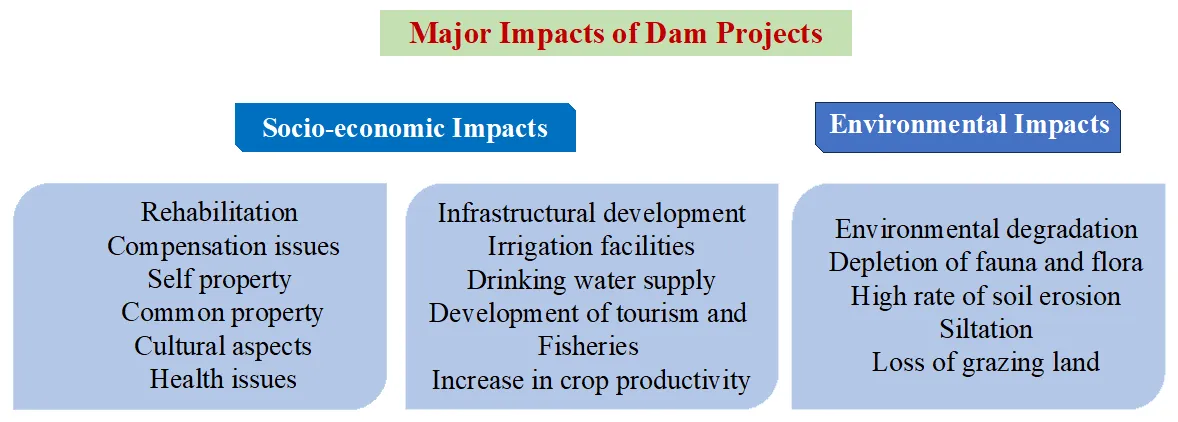
Open Access
Article
15 April 2025Without Land and Water in Wallmapu (Ancestral Mapuche Territory): Exploring Causal Relationships and Perceptions in the Chol-Chol Watershed, La Araucanía, Chile
From a multi-variate database, causal relationships regarding water scarcity for human consumption in the Chol-Chol River basin were identified. The relationships were examined using the principal component analysis (PCA) statistical technique, and digital coverage was processed with ArcGIS 10.1, allowing for the construction of different thematic maps. Semi-structured interviews were conducted with various local actors, including Mapuche community leaders or lonkos (chiefs in the Mapudungun language) and local planners. The models with the greatest statistical significance are associated with the variables that measure land use changes between 2013 and 2017, particularly native forest and agricultural crops. In areas with greater changes in land use, there is less water availability and greater drinking water distribution by tanker trucks. A group of three models with the best goodness of fit (statistically significant) were identified. The models are related to the replacement of native forests with forest plantation (monoculture) and overexploitation of groundwater for irrigation. This model also links lower native vegetation cover in the southeastern part of the basin to agricultural uses on arable land, which is of higher quality than land in the north, and to lower drinking water consumption. The historical occupation processes of the Araucanía region (Wallmapu), the public policies of land and water (water emergency zone), climate change (decreases in flow and precipitation and increases in temperatures) are some of the driving forces behind land use change and water availability observed. An important innovation of this work has been the realization and discussion of the interviewees’ perceptions, showing different perspectives on a common problem; water scarcity. The interviews reveal diverse responses to the research question: What are the main variables related to the lack of water in Mapuche territory? The perception of Mapuche lonkos is that the lack of water is mainly associated with the rapid expansion of forest plantations. Local planners in the municipalities share a similar opinion.

Open Access
Article
20 March 2025Fluctuations in Internal Water Footprint of Major Crops in Egypt: Implications for Sustainable Water Management
The scarcity of water represents a significant obstacle to the advancement of agriculture in Egypt, requiring the implementation of inventive water policies and effective resource management practices. The notion of virtual water, which considers the water contained within things, is a possible remedy to mitigate the strain on water resources. This study examines the changes over time in the amount of water used internally and the amount of virtual water exported by rice, maize, and wheat crops in Egypt between 2000 and 2018. The assessment evaluates the impact of climate variables, crop productivity, and renewable water sources on the internal water footprint. The study uses data from several sources and applies a Nonlinear Autoregressive Distributed Lag (NARDL) model to analyse how productivity, renewable water supplies, temperature, and precipitation affect the internal water footprint. The EVIEWS software is utilised for conducting statistical analysis. The results demonstrate that the internal water footprint and productivity of the crops studied vary over time, and climate conditions and the availability of water control this variation. The maximum internal water footprint values for rice, maize, and wheat were recorded in 2008, 2011, and 2017, respectively, aligning with the highest temperatures and available renewable water resources. The analysis reveals complex connections between the independent factors and the internal water footprint of each crop. Precipitation has an inverse correlation with the internal water footprint of rice, but renewable water resources have a favourable impact on the internal water footprint of wheat. The study emphasizes improving crop choices to minimize water usage and boost water output. Given Egypt’s expected water scarcity by 2025 and its reliance on Nile water for irrigation, implementing sustainable solutions for water resource management in agriculture is crucial. These findings give useful insights for policymakers and stakeholders in creating efficient water management policies and promoting food security in Egypt.
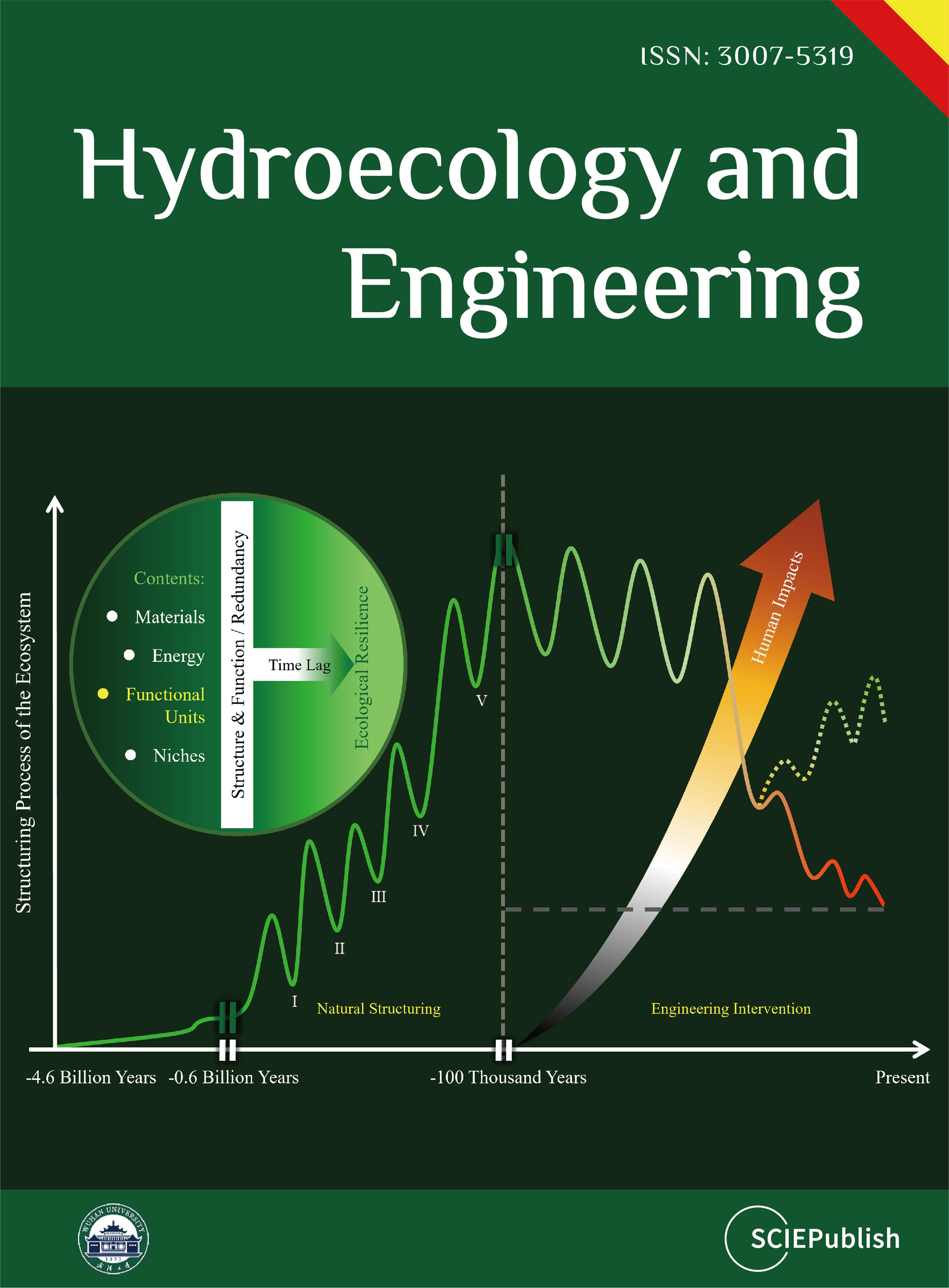
Open Access
Review
10 March 2025A Review on Water Quality Indices
Water, as vital natural resource, is indispensable for human activities, both directly and indirectly. It significantly contributes to a country’s economic development, encompassing above-ground and underground water resources. However, ongoing pollution from surface contaminants is causing concerning degradation in both confined and unconfined aquifers, warranting the need for addressing this issue. Water quality indices (WQIs) serve this purpose by simplifying complex water quality data, providing a single value for easier interpretation. Surface water quality indices have achieved global recognition, while the development of groundwater quality indices is an evolving field. WQIs are established based on specific water quality criteria set by national and international organizations, which consider various parameters based on the intended use of water bodies. Consequently, numerous WQI models exist, including National Sanitation Foundation (NSFWQI), Oregon (OWQI), British Columbia (BCWQI), Canadian Council of Ministers of the Environments (CCMEWQI), and country-specific variants tailored to the unique requirements of individual regions such as Vietnam, India, Indonesia, Spain, Canada, Malaysia, and others, all in accordance with the specific characteristics of the water system under assessment.
